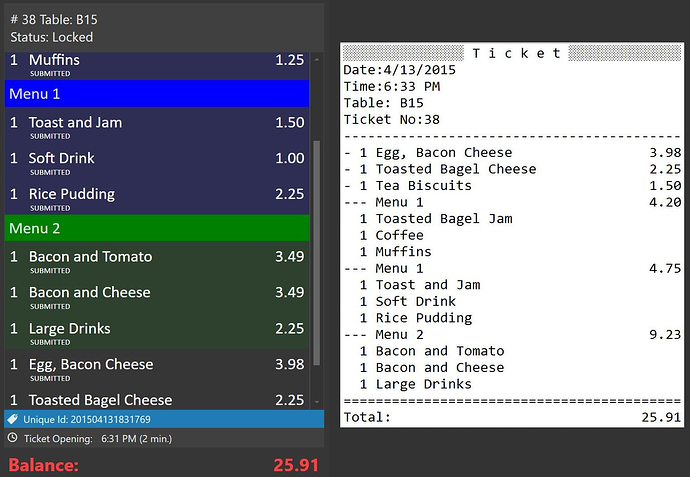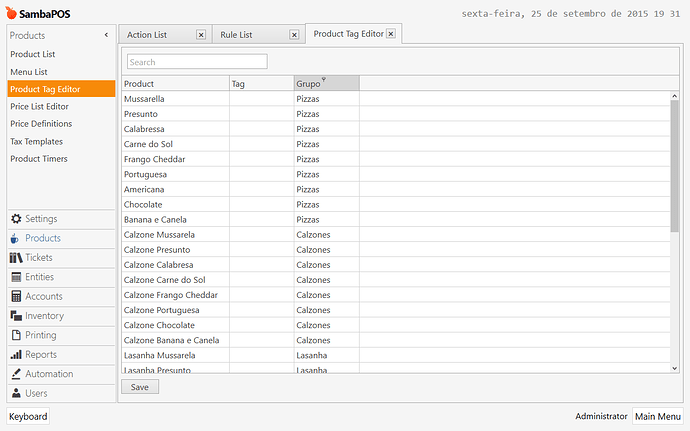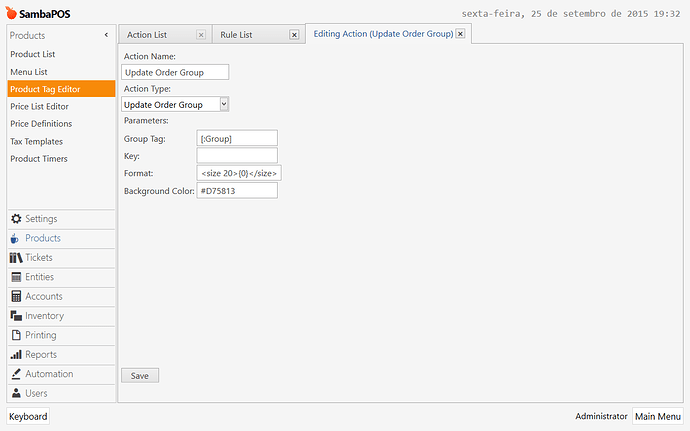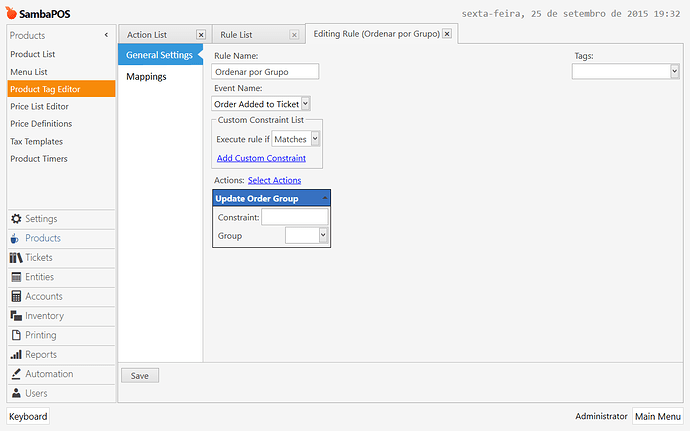No it contains someone else’s database it will not be configured for you. It’s best not to use other people’s databases. You should study various tutorials to get idea of how Sambapos works then you can customize it for your own needs.
I would do a different ticket for each person knowing that you could have multiple tickets in one table…
the problem would be knowing wich person gets what…
Samba has teh ability to open multiple tickets in one table from scratch, that means “no extra” configuration to do that, and as far as I can see, that would solve your problem.
G.
@emre or @Jesse or @QMcKay, I could not make this work… for sure I am missing something… is there any toturial to look at?
Thanks!!!
H.
Which one… the Order States?
sorry… should have cleared that…
update order group
Thnaks!!!
G.
Ah ok Update Order Group is a new addition I think it was developed while you were away. One minute I will get you some resources.
##5.1.21
Grouping in Tickets
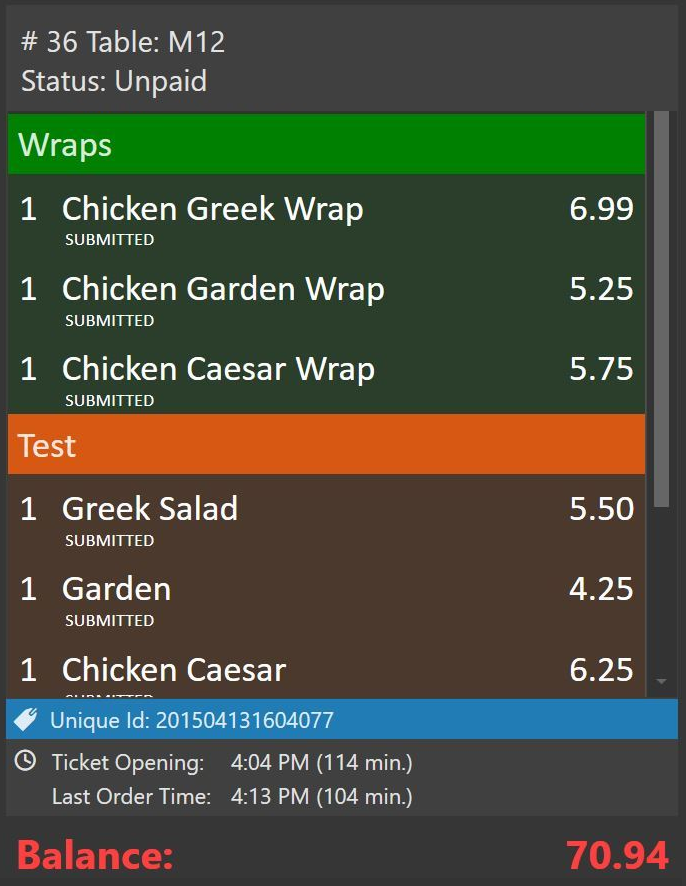
Use Update Order Group Action to group orders as needed.
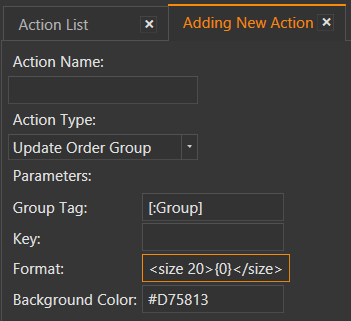
Group Tag: the name of the group
Key: another group identifier. It is not displayed on screen. You can use it to have multiple groups with same name.
Format: {0} is a placeholder for Group Name. You can use format parameter to change size, color, font of the group bar.
Background Color: is the background color for the group bar so you may have multiple groups with different colors.
Group Printing
Notice there are two Menu 1’s printed separately because different Key parameters used in action.
Template:
PS: [ORDERS:GROUP TAG=*] is a special template section for orders that have a group tag.
[LAYOUT]
<T>Ticket
<L00>Date:{TICKET DATE}
<L00>Time:{TIME}
{ENTITIES}
<L00>Ticket No:{TICKET NO}
<F>-
{ORDERS}
<F>=
<J10>Total:|{TICKET TOTAL}
<F>=
[ORDERS GROUP|GROUP TAG]
<J00>--- {GROUP KEY}|{GROUP SUM}
[ORDERS GROUP:]
[ORDERS]
<J00>- {QUANTITY} {NAME}|{TOTAL PRICE}
{ORDER TAGS}
[ORDERS:GROUP TAG=*]
<J00> {QUANTITY} {NAME}
{ORDER TAGS}
[ORDER TAGS]
<J00> * {ORDER TAG NAME} | {ORDER TAG PRICE}yes I did all that but could not make them group in the ticket (screen)… I dont know why.
I think that I dont knwo where or when to execute the action…
Thanks!!
G.
Try Order Added event.
I must be doing something very wrong, jajajajajjajajajaja
lets see
is there anything missing?
Thanks!!!
g.
Yes. You didn’t set a value for group.
You will need to add multiple actions and define different colors etc for each group.
I got it working!!!
Thanks guys!!!
i am happy… got this working and @emre added a new feature for me… yuhuuuuuuu
G.
I think you’ll also want to try {ITEM TAG:Grupo} instead of [:MenuItemGroupCode].
why?
Thanks!!! this issue with post bigger than 20 charsssssssssssssssssssss
G.
Because you defined your groups using Item Tags… MenuItemGroupCode is for going to Products and defining group codes there.
If you expect it to use the Item tags which you showed in screenshot then you should use that. It looks like you may have made them the same as the Menu Item codes but maybe not.
Yes I did…
What you are saying is that I may cancel my item Tag, and use MenuItemGroupCode?
seems a lot cleaner that way…
Thanks!!!
G.
EDIT: YES, that works perfectly… so the nly thing I was missing was the value for the group in the rule… LOL
EDIT 2: Is there any way to group in the printed ticket but keep the individual prices instead of the group sum?
Thanks!!!
Yeah take {GROUP SUM} out of the [ORDERS GROUP|GROUP TAG] section
I have seen that… when you group items, the voided items appear under orders and not under void orders…
is that correct?
Thanks!!!
G.
Not sure I understand what you mean.
voided orders appear under orders, instead of appearing under voided orders in a printed ticket…
Thanks!!!
G.
